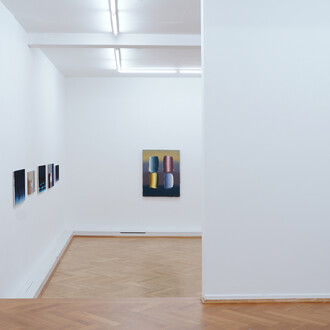The MdbK is exhibiting two expansive installations by Ernesto Neto in the central hall on the third floor. Born 1964, the Brazilian artist produces works as physical and sensual experiences. He creates biomorphic sculptures that invite onlookers to become aware of their own bodies and to enter into direct contact with the work. Neto was influenced in his artistic development by the participative and political art in Brazil during the 1960s, by Neo-Concretism and the Tropicália movement. A critical exploration of nature and the human body are pivotal reference points in his art.
The amorphous floor sculpture O tempo lento do corpo que é pele (“The slow rhythm of the body, which is the skin”) from 2004 touches the olfactory sense even before entering the room: the knots, tied together using red and sandstone-coloured fabrics, are doused in the spices turmeric, cloves, pepper and cumin, transforming the air into a sensually immediate component that is an essential part of the work. The nózinho (“small knots”“) belong to the traditional crafts skills in Brazil and are manufactured individually by hand in the women’s cooperative Coopa-Roca. Neto says about the sculpture, which drapes itself across the floor like a second skin: “The idea of skin is important to all my work: skin protects our existence and, at the same time, is the boundary point at which our innermost emotions meet our outermost actions. I perceive the body as a landscape – a lake or a field – and the sculpture is a landscape as well […].”
Visitors to his piece Esqueleto Glóbulos (“Skeleton of blood cells”) from 2001 will also feel transported into a biological landscape. Over 14 metres long, the sculpture consists of nylon hoses given shape by polystyrene spheres. They create crossbars and cavities, calling to mind the forms of skeletons, bones tissue or cells. Neto uses gravity as part of the installation – concerned to weigh up the forces and find a balance.
















